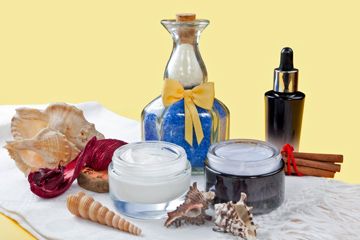The women (and men!) of the world have spoken -- they want moisturizers that effectively firm and lift age-ridden areas, and lots of 'em. As a result, the marketplace has responded with an option or 12 from every major cosmetics house in the world. Because of the variety of factors that can wreak havoc on our bodies, like pregnancy, weight gain/loss, and plain old aging, there are products out there to firm and lift every body part. For example, lip-plumping moisturizers, cellulite-minimizing serums and creams specific to faces, eyelids and necks/jowls, are just a few of the options designed to kick flabby, wrinkly skin to the curb. Some women even use them to perk up lackluster breasts!
It's no wonder we're so keen on the development of such "fountain of youth" products. Our skin takes a beating from practically the time we're born thanks to exposure to sun, wind, chemicals and the general effects of gravity. This is compounded by the fact that, as we age, our skin naturally loses elasticity. When elastin and collagen -- the key components that keep skin looking young and lovely -- lose their oomph, skin starts to sag and wrinkle.
Advertisement
Weight gain and loss also has a major impact on how skin holds up over time. According to Prevention magazine, the average adult woman loses 5 pounds (2.3 kilograms) of muscle and replaces it with 15 pounds (6.8 kilograms) of fat every decade. Since fat sits differently beneath the skin than muscle does, it affects how our surface appears, often leading to the development of unwelcome cellulite. This dreaded bumpy, cottage-cheesy, dimpled-looking skin can show up anywhere, at any time and on anyone. In fact, WebMD reports that 90 percent of women have cellulite, even the super-skinny set. Weight gain and skin degeneration play major roles in cellulite development, but so do hormones and genetics, which aren't so easily controlled.
So, what do these "miracle products" actually do? The idea is that they plump up the affected area where applied, making problem areas firmer and less noticeable. Depending on the product, some users enjoy excellent results, whereas others feel that they've wasted their money. So, do your research before dropping any cash on a particular moisturizer. If cellulite is your concern, try to incorporate healthy eating and exercise to achieve the best possible results. Although you can't expect total miracles, most creams should help to some degree.
On the next page we'll talk about the active ingredients in firming and lifting moisturizers and how they work.
Advertisement


